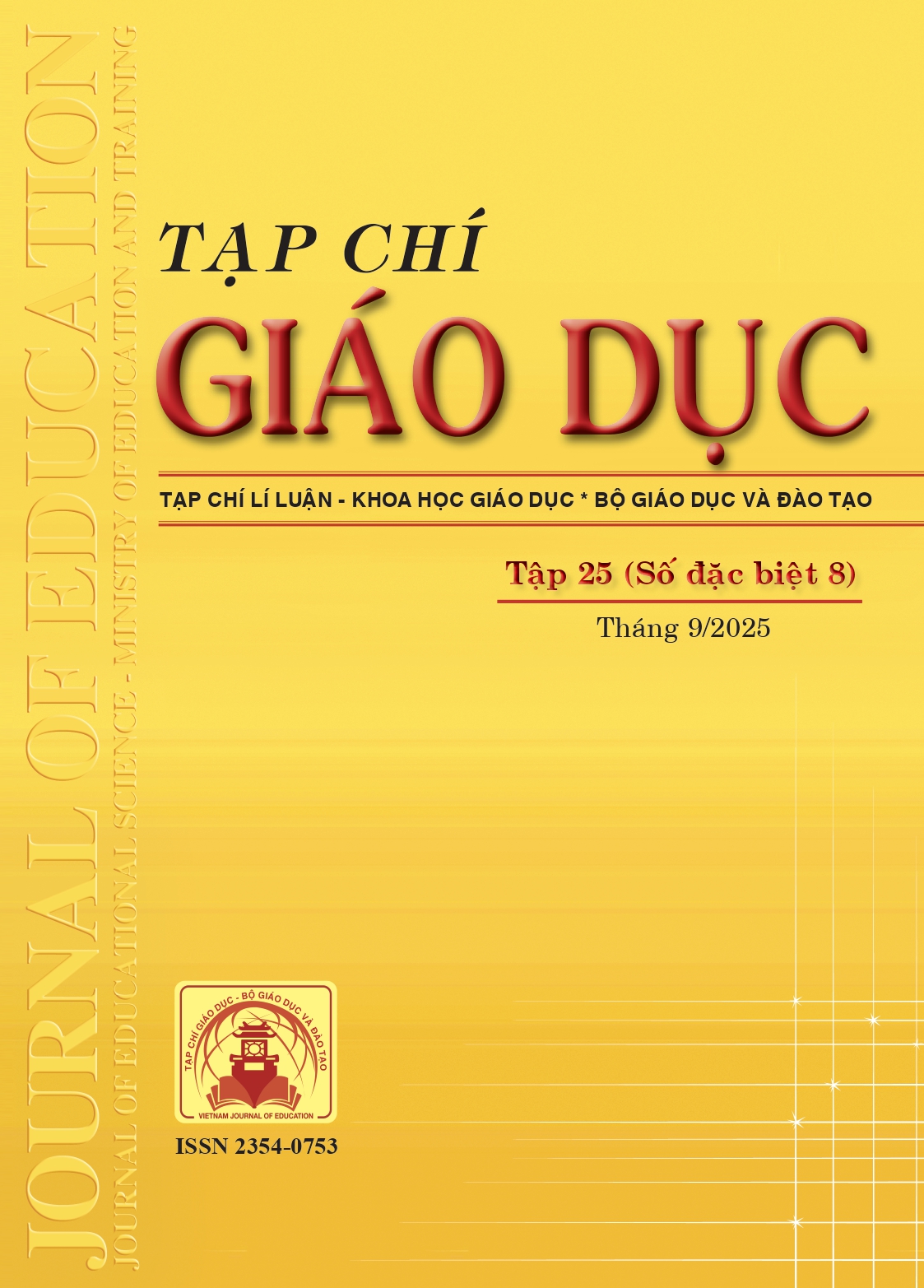Lí thuyết giao tiếp - nhận thức: Tiềm năng ứng dụng trong nghiên cứu tư duy số và thực hành dạy học về số cho trẻ mầm non
Tóm tắt
This article provides an overview of Sfard’s Commognitive Theory and analyzes its potential for investigating and developing numerical thinking in early childhood. From the perspective of this theory, thinking is understood as a form of communication, and numerical thinking is approached as a mathematical discourse that is gradually individualized through language, symbols, actions, and tools. The article emphasizes the central role of “routines” - categorized into three types: deeds, rituals, and explorations - as analytical tools for understanding the development of children’s numerical thinking. Learning is conceptualized as a shift from ritualized to explorative participation, through a process known as de-ritualization. Based on this theoretical framework, the paper proposes pedagogical directions for teaching numbers in pre-school education, focusing on designing meaningful communicative environments that support the individualization of numerical discourses and foster the sustainable development of mathematical thinking tailored to each child.
Tài liệu tham khảo
Baroody, A. J. (2004). The developmental bases for early childhood number and operations standards. In D. H. Clements, J. Sarama, & A. -M. DiBiase (Eds.), Engaging young children in mathematics: Standards for early childhood mathematics education (pp. 173-219). Lawrence Erlbaum Associates.
Bộ GD-ĐT (2021). Chương trình Giáo dục mầm non. NXB Thanh niên.
Clements, D. H., & Sarama, J. (2009). Early Childhood Mathematics Education Research: Learning Trajectories for Young Children. Routledge.
Denton, K., & West, J. (2002). Children’s reading and mathematics achievement in kindergarten and first grade (NCES 2002-125). U.S. Department of Education, National Center for Education Statistics.
Fuson, K. C. (1988). Children’s Counting and Concepts of Number. Springer-Verlag.
Jabareen, Y. (2009). Building a Conceptual Framework: Philosophy, Definitions, and Procedure. International Journal of Qualitative Methods, 8(4), 49-62. https://doi.org/10.1177/160940690900800406
Lavie, I., & Sfard, A. (2019). How Children Individualize Numerical Routines: Elements of a Discursive Theory in Making. Journal of the Learning Sciences, 28(4-5), 419-461. https://doi.org/10.1080/10508406.2019.1646650
Lavie, I., Steiner, A. & Sfard, A. (2019). Routines we live by: from ritual to exploration. Educational Studies in Mathematics, 101(2), 153-176. https://doi.org/10.1007/s10649-018-9817-4
Sfard, A. (2008). Thinking as Communicating: Human development, the growth of discourses, and mathematizing. Cambridge University Press.
Sfard, A. (2020). Commognition. In Lerman, S. (Ed.), Encyclopedia of Mathematics Education. Springer, Cham. https://doi.org/10.1007/978-3-030-15789-0_100031
Sfard, A., & Lavie, I. (2005). Why Cannot Children See as the Same What Grown-Ups Cannot See as Different? - Early Numerical Thinking Revisited. Cognition and Instruction, 23(2), 237-309. https://doi.org/10.1207/s1532690xci2302_3
Đã Xuất bản
Cách trích dẫn
Số
Chuyên mục
Giấy phép

Tác phẩm này được cấp phép theo Ghi nhận tác giả của Creative Commons Giấy phép quốc tế 4.0 .












